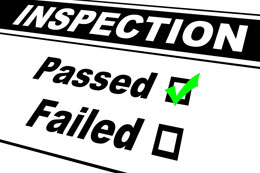Q. What’s the best way to declutter my home before I show it to potential buyers? Can I leave packed boxes in a corner or do I need to move things into storage.
A. Even if your house hasn’t been featured on “Hoarders,” making an
effort to clear out clutter and to ensure that your home is as neat and
tidy as possible before opening your door to buyers is common advice in
real estate circles. And for good reason, said Jeffrey Stockwell, a
senior vice president with Stribling & Associates in Manhattan.
 “It’s vital, because most real estate is aspirational, and buyers want
to see themselves someplace better and more beautiful,” he said. “They
want the feeling that if they move in there, it will be organized, clean
and attractive. If they walk into a cluttered, messy space, there’s
none of that feeling that life will be better.”
“It’s vital, because most real estate is aspirational, and buyers want
to see themselves someplace better and more beautiful,” he said. “They
want the feeling that if they move in there, it will be organized, clean
and attractive. If they walk into a cluttered, messy space, there’s
none of that feeling that life will be better.”
Even if your home is in good condition, Mr. Stockwell said, “if it’s
cluttered, people will think it needs a renovation, and that lowers the
value.”
But cleaning up isn’t always easy. “You’re parting with things that have
emotional value, and that’s very difficult for people,” he said. “They
understand the need to do it. It doesn’t cost much, if anything, and yet
it’s really hard to get clients to do it.”
Packing personal belongings into boxes that remain in the apartment
isn’t much of a solution. “If I go into an apartment and see a lot of
boxes, even if they’re attractive boxes,” he said, “I immediately think
there’s not enough storage space.”
Jeffrey Phillip, a professional organizer in New York, agreed that the boxes need to go.
You could move those things into a storage unit, he said, but “better yet, take that time to get organized.”
Gearing up for a move is a “perfect time to really edit yourself down,”
he said. There are a number of advantages to doing so: “You’re going to
spend less money for someone to move you, and you’re also going to spend
less money on storage.”
Just “don’t expect to do it all in one weekend,” Mr. Phillip said. Give
yourself a few weeks — or even months — to complete the task.
“It’s all about doing small projects, one at a time,” he said, rather
than trying to tackle the entire home in one shot, which could be
overwhelming.
Some areas where you can get quick results include wardrobes, kitchen
pantries and drawers, and collections of CDs and DVDs. For the latter,
even adding the discs to a binder and doing away with the cases can
clear a substantial amount of shelving.




